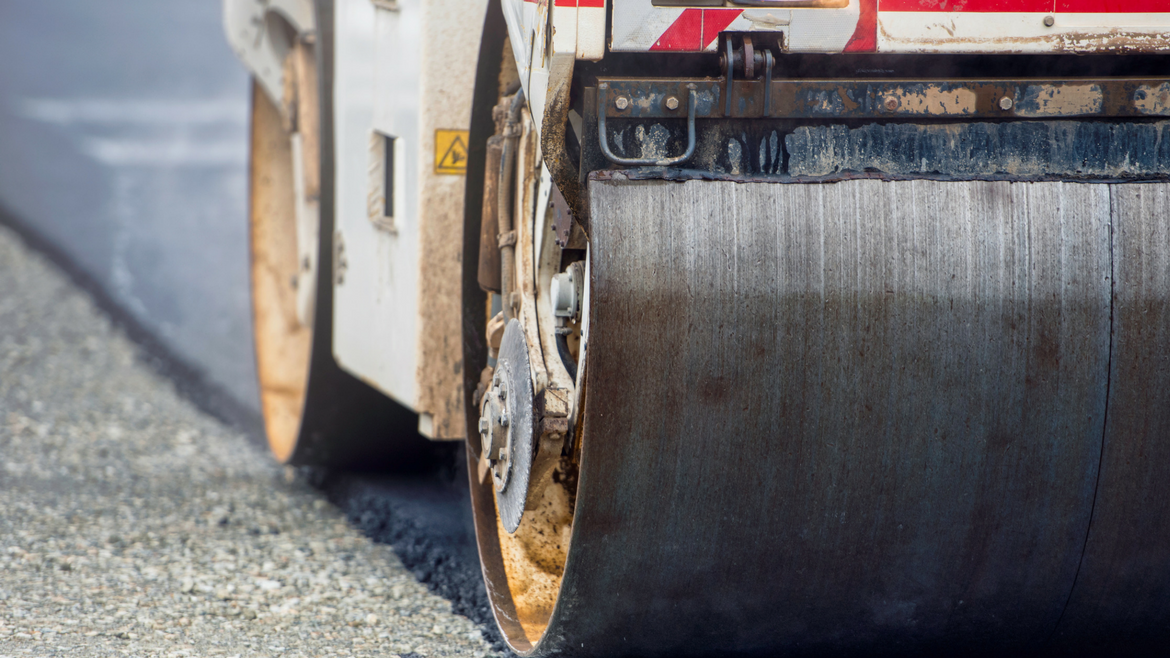A1 Professional Asphalt & Sealing Llc Fundamentals Explained
A1 Professional Asphalt & Sealing Llc Fundamentals Explained
Blog Article
The A1 Professional Asphalt & Sealing Llc PDFs
Table of ContentsThe Definitive Guide to A1 Professional Asphalt & Sealing LlcThe Definitive Guide for A1 Professional Asphalt & Sealing LlcWhat Does A1 Professional Asphalt & Sealing Llc Mean?A1 Professional Asphalt & Sealing Llc for DummiesSee This Report about A1 Professional Asphalt & Sealing Llc10 Simple Techniques For A1 Professional Asphalt & Sealing Llc

Remember that setup process must just adhere to a correct surface area inspection and a complete estimate. With 75 years of asphalt paving experience, from highways to driveways, we are your local source for all of your asphalt paving needs.
If you live or operate in the Milwaukee area, call us at 262-965-2121. For the Madison area, call us at 608-249-7931.
The 9-Minute Rule for A1 Professional Asphalt & Sealing Llc
(PD) Photo: The United States Company for International Advancement (USAID)Asphalt-laying maker leading a road. Paving asphalt is a mix of oil asphalt (typically described as bitumen), aggregate and ingredients that is extremely typically utilized as a leading layer of pavement for roadways. A typical paving asphalt consists to 90 to 95 percent by weight of accumulation and 5 to 10 % of bitumen.

Such roadways came to be named after McAdam and understood as tarmacadam roads, later reduced to tarmac.

4 Simple Techniques For A1 Professional Asphalt & Sealing Llc
As the paving asphalt cools, it will certainly strengthen into a nearly-rigid strong, though some versatility is maintained at common outdoor temperature levels. As the physical residential or commercial properties are primarily reliant on the aggregates used, they can differ over a large variety.
Generally this is done using a belt weigher, as the product needs to reach the following action in a continual flow. Drying: In a rotary drying out drum, the components of the accumulation are dried out at a temperature in between 140 and 190 C. After the drying out, the elements are looked and individually stored in numerous silos - what is cold mix asphalt.
This likewise permits quick altering of the recipe. The binder (asphalt) is kept in warmed tanks and included to mixer according to a gauged price of flow. Mixing: The mixer can be working either constantly or at periods. An interval mixer is fed with the aggregates using a charging screw and the binder is synchronously infused into the blending chamber.
The 5-Minute Rule for A1 Professional Asphalt & Sealing Llc
Dispatching: The combined product is kept in a warmed silo which generally has numerous chambers to keep different dishes. Asphalt needs to get to the building and construction site with a reasonably heat as it can not be appropriately put if it cools to the point where it can no more be compressed.
For brief distances between the asphalt plant and the building site, common trucks can be utilized and covered with tarpaulins to keep the temperature levels. a-1 asphalt. If the ambient temperature level is as well low or the construction site is as well far away to use common vehicles and keep the appropriate temperatures, after that unique trucks need to be used

Are you planning for an asphalt paving job at some time in the near future? It's essential to understand asphalt installment can be a highly involved and complicated procedure. While setting up the asphalt itself does not require a bunch of time, the style, demolition, and preparation procedures may. Completely, there are 9 unique steps associated with asphalt sidewalk installation, and we have actually outlined them below to create an overview of how the procedure functions.
How A1 Professional Asphalt & Sealing Llc can Save You Time, Stress, and Money.
To learn all about how the process works, have a look at our blog on making use of GPS technology to make asphalt leading more efficient. When the task layout is ended up, we proceed to demolition. Whether there's presently asphalt sidewalk, concrete, or pavers in the area, they should be removed so we can mount the sub-base and sidewalk in the future.
Effectively ready sub-base is vital since it: Offers a barrier to protect against frost heave brought on by defrosting my response and freezing - a-1 asphalt. Develops a steady surface that can supporting the new sidewalk and its predicted web traffic tons. Provides a thick, compressed, and steady support for the roadway or car park to enhance its long-term longevity.
Project needs and forecasted website traffic tons aid identify just how the base should be prepared. Most asphalt pavement installments link existing highways, car park, or driveways, and there are normally also nearby visuals and pathways. When we install asphalt, we need to smooth the connection between the brand-new sidewalk and the existing paved frameworks.
Facts About A1 Professional Asphalt & Sealing Llc Uncovered
Butt joints exist anywhere brand-new pavement fulfills older asphalt or concrete, and they must be as seamless as possible to guarantee chauffeurs or pedestrians don't find a distinction in between the surface areas. Correct grading is also vital to guarantee reliable water drain. The base training course is the layer of aggregates and binder that sits right on top of the compacted sub-base or subgrade, depending on the project and its demands.
Report this page